How to Write a Book the Plagiarism-Free Way: Expert Tips and Techniques
Ashley Merit
Content writer and editor for Netus.AI
Table of Contents
How to Write a Book the Plagiarism-Free Way. Plagiarism, a form of content theft, occurs when a writer uses another person’s content, either partially or entirely, without proper acknowledgment. There are two primary forms of plagiarism: intentional and accidental. Intentional plagiarism involves purposely copying another author’s work, while accidental plagiarism occurs when a writer unknowingly commits the offense.
The internet age has made it increasingly important for writers, content creators, and publishers to ensure originality and avoid plagiarized content. With a rise in digital publications, the instances of plagiarism have also gone up. To maintain quality content and ethical writing standards, it is crucial for individuals and businesses to adopt effective plagiarism prevention techniques.
Key Takeaways
- Plagiarism occurs in two forms: intentional and accidental, both of which have consequences.
- The digital age has increased the necessity for writers and content creators to actively avoid plagiarism.
- Adopting effective prevention techniques is essential for maintaining quality content and ethical writing practices.
Why There Are Ever-Increasing Examples of Plagiarism?
With the growing dependency on the internet for information, plagiarism has become an increasingly serious issue. The reasons behind the rise in plagiarism cases include factors such as meeting deadlines, lack of originality, improper citations, and misunderstanding of paraphrasing. Here are some of the key contributors to plagiarism:
- Pressure to meet deadlines: Students and writers often resort to plagiarism due to the fear of failing to meet strict deadlines. This fear drives them to take shortcuts, leading to plagiarism in their work.
- Lack of creative ideas: A well-written piece reflects the author’s original thoughts and opinions. When faced with a creative block, some individuals may resort to duplicating content to fill the void.
- Improper citation: Proper citation is essential to acknowledge the original creators of the content used in one’s work. Failing to cite sources can result in plagiarism, as the original author’s contributions remain unrecognized.
- Misunderstanding of paraphrasing: Many writers mistakenly believe that simply rephrasing or changing a few words from a source will prevent plagiarism. However, this misconception can lead to accidental plagiarism, and penalties may be enforced.
Regardless of its intent, plagiarism has severe consequences. It tarnishes the writer’s reputation, affects their integrity, and disappoints loyal readers. In addition, copyright infringement can lead to financial losses and even legal action.
To maintain intellectual property respect and uphold a solid reputation, it is crucial for students, writers, and experts alike to avoid plagiarism in their work by diligently citing sources and demonstrating originality in their academic papers and creative projects.
How to Write a Book Plagiarism-Free Way
Writing a book can be a complex process, but following proper guidelines can help avoid plagiarism and create original work. Here are some essential steps and tips to ensure a plagiarism-free book:
Draft Preparation
Before jumping into writing, take time for thorough research and extensive reading. This will not only expand your knowledge base but also help you develop a unique writing style. Familiarize yourself with your chosen topic and create a plan or outline for your book. Being well-prepared reduces the likelihood of relying on copyrighted materials and helps produce original content.
Proper Citation
Acknowledging the sources you’ve used in your writing is crucial for avoiding plagiarism. Whether it’s a print or online source, always give credit to the original author and their work. Include a bibliography or a citation within the text that directs readers to the source material. Doing so allows readers to explore further and demonstrates transparency in your writing approach.
Studying Competitor’s Work
Researching other authors’ works in the same genre or topic area can be beneficial. It helps you avoid overused themes and informs you of new perspectives to explore. Familiarizing yourself with competitors’ work inspires creativity while ensuring your work stands apart in a fresh and engaging manner.
Proofreading
Revision is a crucial final step before publishing your book. In the past, authors had to manually read through their drafts multiple times to spot errors. However, with the advancement of technology, proofreading tools are available to streamline this process. Use these tools to detect grammar, sentence structure, and spelling issues, ensuring your work is polished and error-free.
Utilizing Plagiarism Checkers
To safeguard your work from plagiarism, employ plagiarism checker tools to compare your content with existing materials. These tools quickly detect similarities in words, phrases, or sentences across various file types. By using plagiarism checkers, you minimize the risk of unintentional plagiarism and ensure the authenticity of your written work.
Incorporating these strategies and maintaining a commitment to originality and creativity throughout the writing process will result in a plagiarism-free book. By conducting research, citing sources, learning from competitors, proofreading, and using plagiarism checkers, you can confidently create a unique and authentic literary piece.
How to Write a Book Report?
When crafting a book report, it’s crucial to assess various aspects of the book such as its plot, characters, language, and writing style. The opinions of readers play a significant role in the publishing industry, and a well-written book report can offer valuable insights for both writers and readers.
To create a high-quality book report, one must first read the book thoroughly and engage in proper editing. This ensures optimal readability and accuracy in the content being presented. Keep the following points in mind when writing a book report:
- Publish: Understand the importance of readers’ opinions and the impact they have on the publishing industry.
- Language: Focus on the clarity and simplicity of the language used in the book, avoiding obscure or complicated terms.
- Editing and Proofreading: Dedicate time to refining the content, checking grammar, and proofreading for errors.
- Writing Style and Tone: Analyze the author’s style and maintain a neutral, clear, and knowledgeable tone in the report.
- Characters: Comment on the depth and development of the characters within the story.
- Readability: Consider the book’s overall readability, ensuring coherence and engagement for the reader.
- Accuracy: Verify the accuracy and authenticity of the content, steering clear of plagiarism.
Following these guidelines will help produce a concise, informative, and well-structured book report that provides valuable insights into the work being reviewed.
Use Copyleaks to Prevent Plagiarism
For those seeking a reliable plagiarism checker, consider using Copyleaks. Leveraging advanced AI and machine learning technology, this tool delivers accurate results. Its benefits extend to book reviewers, writers, and users of other plagiarism checkers, such as Grammarly, Turnitin, and Duplichecker. With Copyleaks, you can confidently produce original content, free from plagiarism concerns.
Frequently Asked Questions
Best Practices for Conducting Original Research for a Book
- Choose a unique angle on a topic of interest.
- Consult primary sources for information that may not be easily accessible.
- Include interviews with experts in the field to gain new insights.
- Ensure thorough and accurate documentation of references as you go.
Ensuring Unique Writing on Common Topics
- Analyze various perspectives on the topic to gain a broader understanding.
- Find niche aspects within the topic to focus on.
- Blend personal experiences or anecdotes with factual information.
- Use creative analogies or metaphors that are relevant to the subject matter.
Proper Citation of Sources in a Book
- Familiarize yourself with the citation style preferred by the publisher.
- Use a citation management tool to track sources and generate citations.
- Include both in-text citations and a bibliography or works-cited page.
- Examine other books in the genre to understand the best practices for citing sources.
Checking Originality of Content Before Publishing
- Utilize plagiarism detection tools to scan the manuscript.
- Share your work with a trusted friend or colleague for feedback on originality.
- Check against recently published works in the same subject area.
Strategies to Avoid Unconscious Plagiarism
- Take breaks between researching and writing to allow information absorption.
- Use techniques such as annotating, summarizing, and outlining to understand the source material.
- Write content in your own style, making a conscious effort to process the information before incorporating it.
Techniques for Accurate Paraphrasing in Books
- Read through the original text and gain a complete understanding of its meaning.
- Focus on conveying the message and ideas in a new way rather than mirroring the text’s structure.
- Use synonyms and alternate phrasings, but maintain the original message’s accuracy.
- Consider using tools like paraphrasing tools to practice paraphrasing and improve your skills.

The shortcomings of content generated by AI | NetusAI
Discover why fast, high-volume AI content often fails to deliver real results. Learn about the crucial missing feedback loop and how implementing performance tracking can transform your AI content strategy.
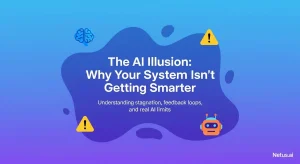
The illusion of AI: Your system's intelligence gap | NetusAI
Stop wasting marketing spend! Most AI tools don’t learn from results, causing content stagnation and low engagement. Discover why your generative AI isn’t getting smarter and what system actually learns and optimizes content.
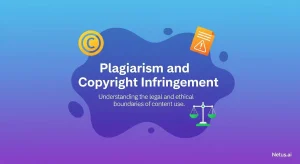
Plagiarism and copyright infringement | NetusAI
Learn the distinct differences between plagiarism and copyright infringement. Understand the ethical and legal implications and get practical strategies for avoiding both academic and creative work with NetusAI.
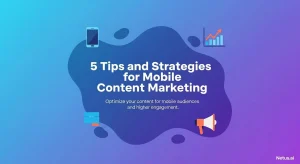
Tips and strategies for mobile content marketing | NetusAI
Optimized for mobile-first indexing, learn 5 essential strategies to capture attention, enhance engagement and drive leads and sales with your mobile content marketing.
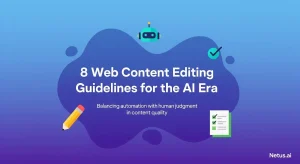
Web content editing guidelines for the AI era | NetusAI
Review web content editing guidelines for the AI era. Learn how to edit AI-generated content, ensure authenticity and optimize for SEO and readability.
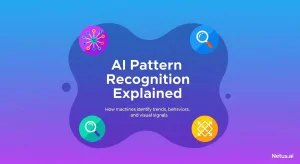
Explaining AI pattern recognition | NetusAI
AI pattern recognition enables machines to identify trends for diverse applications, from detecting plagiarism to fraud. Discover its processes, models and real-world benefits.
